-
Posts
658 -
Joined
-
Last visited
-
Days Won
1
Content Type
Profiles
Forums
Gallery
Downloads
Blogs
Events
Store
Aircraft
Resources
Tutorials
Articles
Classifieds
Movies
Books
Community Map
Quizzes
Posts posted by Keenaviator
-
-
-
I believe it was Stewart aka Crayonbox. Poor Sparkles is a mess.
-
I have a 65 litre tank in the same position. A strip of led's stuck to the back of the tank would illuminate the contents making it easy to see the level from the front. I haven't done it yet but a torch behind the tank works really well. Laurie
-
 2
2
-
-
-
My Jabiru has a Navman fuel flow gauge which shows a higher flow rate for about 10 seconds if I turn on the facet pump. I think the facet puts pulses through the fuel which tricks the flow gauge to indicate a higher rate.
-
I'm pretty sure the PA28 spars are routinely checked each annual due to their potential for corrosion with water sitting down there.
-
Perhaps he was in control and aiming to land in that clear country but didn’t quite make it. The plane is relatively intact. If it were out of control it could have been in a million pieces. I’m calling well done.
-
 7
7
-
 1
1
-
-
E-props are very popular with Paramotoring folk. Lightweight props, excellent efficiency.
-
 1
1
-
-
Perhaps they should have employed one of our locals when designing the injection version - he has fuel electronic fuel injection which can be switched back to carburettor in an instant. It works and I've experienced it in flight (Sonex/Great Plains VW).
-
Don't 912's have an ignition system independent of the alternator/battery? Some form of magneto which is self exciting...
-
I think both. Our airport is moribund, with REX making its' last few flights in before it plans to close on 6th. Both flying schools have closed down. A few local private owners have been up to keep the oil circulating, but we had a couple 'new' aircraft in over the weekend. Actually the hangar is a refuge for me atm : get to plant some kikuyu, clean up inside, wash aircraft, and keep out of my brides hair for a few hours. I don't see any risk to the quarantine principle by doing a local flight. I think the authorities are starting to verge on censorship of the 1st order when they begin to draw lines between 'essential' or 'recreational'. Anyway, keep your sense of humour everyone - we are going to need to. happy days,
Same here regarding the refuge and cleaning up of my hangar. Also a short flight to circulate the oil and maintain skills.
-
 2
2
-
-
Atos is a European hang gliders manufacturer that has been building efficient’rigid’ wings for 20 years plus. Nice looking clean trike with folding prop would be more comfortable than prone. Pitch is weight shift and roll by drag brakes.
-
I know a bloke who flew one out of a strip 384 metres from fence to fence for years.
-
-
105C at cruise is about what i see after a straight in approach and rolling out,at those temps i would imagine most all problems with Jab valves and
heads would never have occurred,and they may have gone on to rule the Recreational engine market.
Too high temps was the dirth of British motorbikes,i'll always remember back in the 80's while working in the Pilbara being told that "british bikes can't handle the heat up here and just burn up",seems Jabiru are the same and it's pretty easy to overcome.
Keenaviator,do you have individual CHT probes fitted?
colin
CHT probe on no. 4. I'd prefer the temperatures to be regarded as too low and inefficient than risk dropping a valve seat. BTW I have been running a mixture control for almost 200 hours and monitor EGT and plug colour.
-
 1
1
-
-
Keenaviator. What you have done seems to me to be a lowering of pressure beneath the engine, combined with ducting air around the sump for an oil cooling effect. Would that be correct?
If so the lowering of the CHTs would be due to greater cooling air from top to bottom of the heads.
Absolutely correct. That was the aim and it appears to work very well.
-
NACA inlets are not a panacea; they might work if placed well forward, where the cowl is still "sloping" into the airflow.
I wasted lots of effort with a separate oil cooler NACA intake- it was "around the corner" from the front of the cowl and led to oil temps of 130C.
Bruce’s SK has the same cowls as mine and probably similar performance. He is trying to resolve high CHT’s. What I have done works.
-
This has worked for me. Move the oil cooler to the rear of the engine and duct air to it via a side naca duct (like carby inlet), reduce the size of the lower air intake that was previously there for the engine mounted oil cooler, built a close fitting duct from this reduced inlet to the sump. Max CHT less than 140 on the ground which quickly reduces to 110 for climb at 80 knots (700-1000 fpm), cruise CHT at 100 knots 105 degrees C. I had a similar setup on my Corby Starlet and replicated it on the Jabiru. No need for cowl skirt or big mods to inlets. I did add a bit to the cooling ducts to prevent air from going under the front cylinders.
-
 1
1
-
-
It won’t be too hard to work out from the wreckage.
-
 1
1
-
-
From SAFA:
There have been a number of WSM members who have expressed concern over reported safety of the wing involved in the Alex Blanch accident, near Newcastle NSW.
At this stage we have carried out preliminary inspections of the wing and there is no indication that it "folded up" as has been reported in the media.
The Streak 3 wing type has operated without incident for over 2 decades.
This particular wing has been utilised on this aircraft for the past 3 years.
We have initiated an independent detailed analysis of the wing, in an effort to determine if it contributed to causation.
Reiterating the point that at this stage we have no reason to suspect that there is a systemic issue with the wing type.
-
 3
3
-
-
Something wrong obviously?
He probably took his eyes off the instruments for more than 3 seconds......
-
 2
2
-
-
They must cut and paste just as the numpty wrote it!
-
No 3. If the investigation reveals a negative G break to the leading edge/s that would indicate a tumble. Also, damage to the base bar from impact with the front strut of the trike would support this scenario.
-
Keenaviator, thanks for your reply... please tell us more about what you have done.
Just today, I have put a 32mm ribbed hose between the 2 ducts, as suggested by oldK who was right about how the difference between the RHS and LHS ducts should be measured. The measurement showed 45mm of water head difference.
Tomorrow I will fly with a connecting duct in place. My hope is that it will equalize things .
Next time I'm at the hangar with the cowls off will take photos outlining what I've done. The balance scat hose between the cooling ducts sounds like a good idea too. The main thing I did was reduce the pressurising of the lower cowl be moving the oil cooler to the rear of the engine, ducting air to it from another vaca duct on the right hand side of cowl. I can control this air to the oil cooler from the cockpit - monitoring oil temperature.
-
 1
1
-


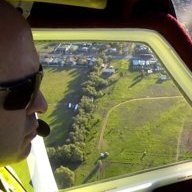
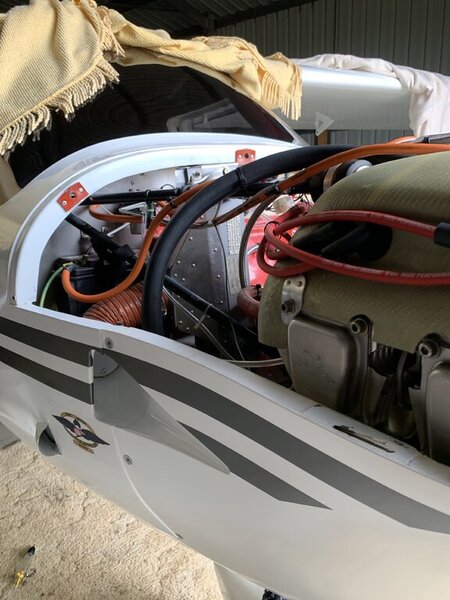
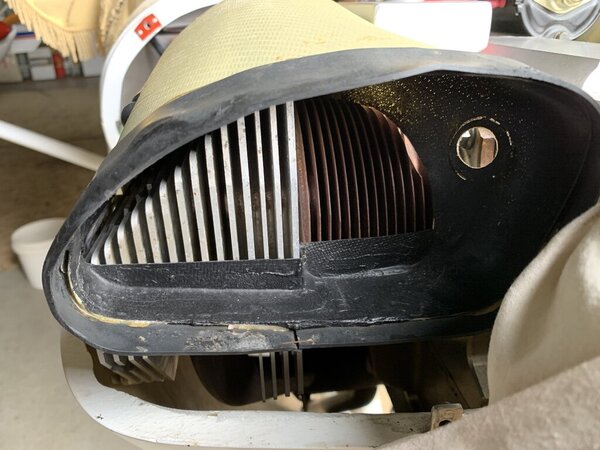
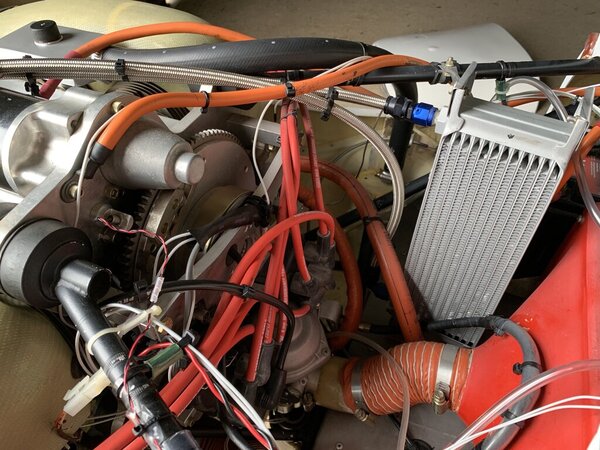
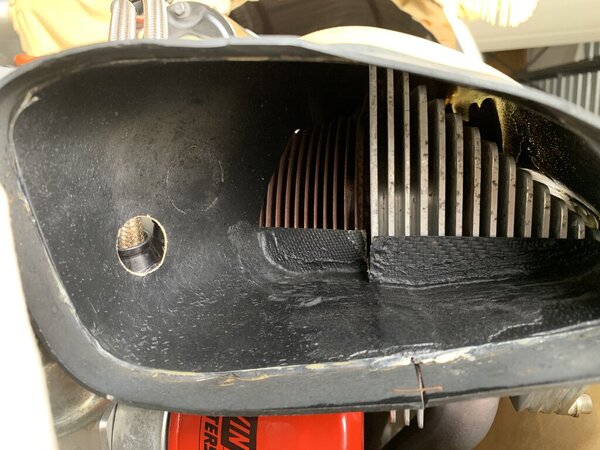
Light aircraft crash on Fraser Island. 25/9/21
in Aircraft Incidents and Accidents
Posted
Something has ripped the nose wheel assembly clean off. That would make the trike stop suddenly and pitch over slamming the nose of the wing into the ground. Possibly a hole in the strip.
I hope Stewart is going okay. His videos are enjoyed by many. Laurie